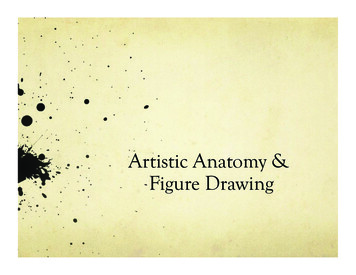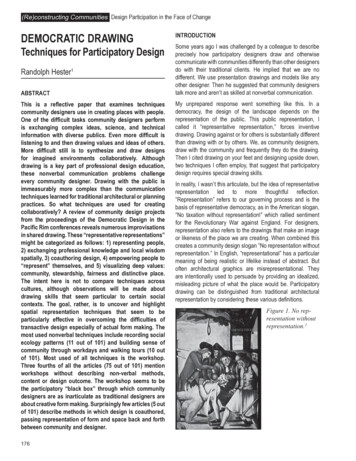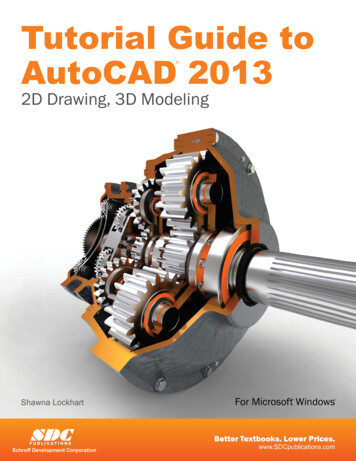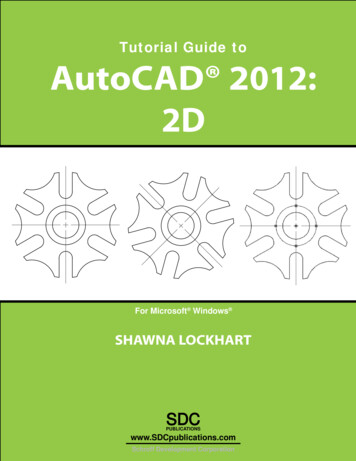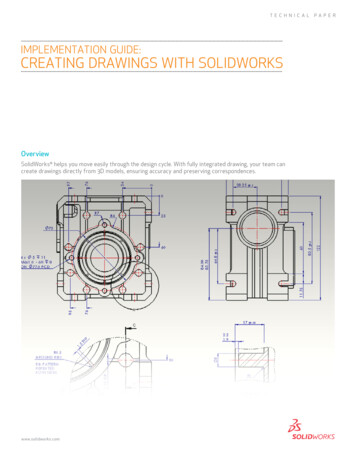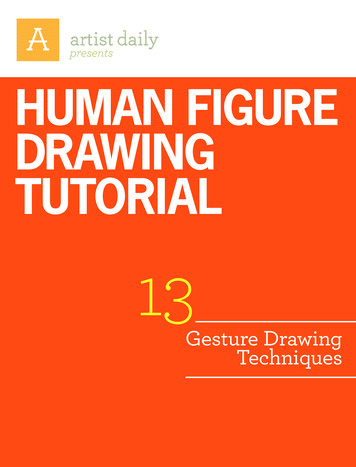
Transcription
presentsHuman FigureDrawingtutorial13Gesture DrawingTechniques
Human Figure Drawing tutorialDrawing MovementCapturing the action line, gesture, and energy of the figure by Bob BahrWhen Patricia A.Hannaway seessome of the moredynamic paintingsby Tintoretto, shesees the work of an animator. “You’dswear a Tintoretto painting movedwhen you weren’t looking directly atit,” she exclaims. “The figures are intransition from one movement to thenext; they are bursting with energy! Iam drawn to that energy.”Hannaway is biased in a way—sheis best known for her work in the fieldof animation. The California-basedartist was the senior character animator for the character of Gollum in TheLord of the Rings: The Two Towers, andshe also worked on the animated filmsShrek and Antz. She cut her teeth inthe animation department at WaltDisney Feature Animation, where sheworked on Mulan. Her fine-art endeavors have earned her recognition as well;she is represented by Kathleen AveryFine Art, in Palo Alto,OgdenCalifornia. But when2007, pastelHannaway sees some ofon toned paper,the academic drawings21 x 12.This premium has been published by Interweave Press, 201 E. Fourth St.,Loveland, CO 80537-5655; (970) 669-7672. Copyright 2009 by InterweavePress, a division of Aspire Media, all rights reserved. The contents of thispublication may not be reproduced either in whole or in part without consentof the copyright owner.2www.artistdaily.com
Human Figure Drawing tutorialbeing created by contemporary realistartists, she is dismayed. “Filling inthe external contour, termed an ‘envelope,’ is not the way many of the OldMasters drew at all,” she asserts. “Theenvelope stiffens the drawing—that iswhy a lot of academic drawings can bestaid and still. They are just models ona stand. They don’t breathe or move.3www.artistdaily.comBut life is in continuous movement.”2006, charcoalThe artist’s schooland chalk on tonedpaper, 26 x 21.ing was rooted inthe traditional. Shemajored in art history at Smith College,in Northampton, Massachusetts, andearned an M.F.A. from the New YorkAcademy of Art. But a second M.F.A.,The ThreeGracesthis one in computer animation, earnedat the School of Visual Arts, in NewYork City, pointed toward her presentcareer, and when Hannaway went towork for Disney, she felt like she wascrossing some kind of line into commercial illustration. Hannaway nowfeels the move was quite the opposite.“I can render anything, I can make
Human Figure Drawing tutorialanything look like a photograph, but Ifound that to be a dead end,” she says.“I have been surprised to find a feeling of connection with the Old Mastersthrough animation.” She began noticing the prominent action line in drawings by Michelangelo and Rubens.She saw how Kollwitz and Degas builttheir drawings on the larger gestureof the figure. She noted the swinginghammers, rearing horses, and vigorous wrestling depicted in Leonardo’snotebooks and thebelow leftfleeting momentsAttitudecaptured in the2006, pastel onwork of Velázquez.toned paper,21 x 12. All artworkAnd she marveledthis article collectionat the dynamism inthe artist.Tiepolo’s subjects.below right“His figures twistMale FigureStudyand turn and are2007, pastel ongreatly exaggertoned paper,18 x 11.ated, but somehow4www.artistdaily.comthey still work in his paintings,” saysHannaway. “You will probably neversee anyone turning or torquing asmuch as some of his figures—if youtried it, you would probably break yourback. But who cares?”The point isn’t the exaggeration. It’show the action line, the gesture, is usedto advance the larger compositionalidea. “Sometimes I distort the formsof the body to accent the action line,”she says. “Whatever makes the drawingwork and read properly on paper, that’swhat I try to achieve. I don’t copy whatI see; I push the pose, using the modelas a reference.” Hannaway stresses thatan artist can always tone it down if theaction line is too extreme. “But alwaysgo to the extreme, then pull it back,”she advises. “It’s very difficult to makea deadened pose more dynamic. I makethe action line more extreme than it isin real life so that when I render on topof it, there’s some movement left over.”Figures that are engaged in dramatic movements are not the only oneswith an action line. Any body that hasweight has an action line. In a standing figure, the action line describeshow the weight is handled by the body:which leg is bearing most if it, whichhip is canted, which shoulder respondsby slightly dipping, how the spine iscurving—even how the head is heldby the neck. “On a standing pose, theforce of the action is the weight goingdown into the floor,” says Hannaway.Determining where the weight, compression, or extension is in a pose givesdirection to such a drawing and determines the center of interest.The artist has some simple advicefor draftsmen who want to learn howto quickly and accurately put down theaction line: Go to the zoo and drawmonkeys. They will force you to simply
Human Figure Drawing tutorialcapture the way theymove—they won’t2005, charcoalstand still enough foron cream paper,careful rendering.24 x 18.“You can’t captureabove centertheir contours,” saysVictory!2007, charcoalthe artist. “But youon cream paper,can capture the action24 x 18.line and, consequently,above rightthe essence of theStudy formonkey. Watch theTempest2006, charcoalweight transfer, theand chalk ontypical actions, how ittoned paper,24 x 18.sits. Learn the character of the animal.See how it hangs and swoops, how thetension works in its body. You can’tworry about the fly in its ear or otherdetails.” Hannaway stresses the actionline to the point that she’s willing tosacrifice anatomical correctness, andshe cites Goya as a convincing exampleabove leftStrike!5www.artistdaily.comof this concept, in particular the highlyeffective drawings of his The Disastersof War series. “Nobody cares that theanatomy of an arm or shoulder maynot be right in one of them,” explainsthe artist. “The way the arm is drawnserves the powerful idea behind thedesign of the drawing.” It may feelhard to ignore technique in most cases,but Hannaway serves a different master. She is in relentless pursuit of “theidea,” and that idea is expressed morein the action lines of figures in herpieces than in their surface information. Her art is about things happening, events occurring or about to occur.She likens it to filmmaking—excepta painter is limited to just one frame.This artist values the kinesthetic overthe merely accurate.In fact, the essence of Hannaway’sapproach is encapsulated in a mottoher mentor, Jim Smyth, put forth:“Draw what the model is doing, notwhat it looks like.” She explains thatthis way of thinking promotes a dialogue between the artist and the model,which enables the artist to capturethe larger relationships and “feel” thepose in her own body as she draws.“My thought process as I’m drawingis, The model is sort of doing this, andkind of doing that—I become engagedwith what the model is doing andmentally take the pose myself, feeling the movement in my own body.This is transferred to the page via anenergized line; the drawing proceedsfrom an inward feeling outward. Incontrast, when the focus is on what themodel looks like, this dialogue shutsdown. Suddenly the drawing becomesall about the surface details and sketching an external contour. It progresses
Human Figure Drawing tutorialTenderness2007, pastelon toned paper,21 x 13.6www.artistdaily.com
Human Figure Drawing tutorialNO PUSHstart witHtHe actionlineHannaway strongly believes thatthe best way to start a drawing is by first laying down theaction line—a line that showsthe shape, force, and directionof the figure’s movement. “Theaction line is not the externalcontour,” she says. “You mustmake a conceptual leap andconsider what the action is.”Draw the shape of the movement, not the thing, says the artist. She advocates keeping yourpen or pencil on the surfacewhile sketching and draw fromyour shoulder, not your hand.Lifting the point off the paperbreaks your train of thought andcauses you to lose your place,and Hannaway says it all needsto go down on the page in oneflow. “Once you get better atdepicting the action line, you willfind that it serves as a sort ofhanger, and all the details justhang off it,” she explains. “Theperspective will be in it, everything. It’s amazing.”For this article, the artist drewthe action line for three stages7www.artistdaily.comSOME PUSHLITE PUSHSTRONG PUSHto ‘filling in’ a contourinstead of ‘feeling out’the larger relationshipsand weight. Nothingkills a drawing fasterthan that thought process! I only render whatenhances the gesture.”Pointedly, Hannawaymentions that the wordanimate comes from theLatin animatus—“to givelife to.”If striking the delicate balance between astrong action line andan inappropriately exaggerated one is a difficulttask, Hannaway’s aversion to tightly rendereddrawings brings up aneven more difficult one:Knowinghowmuchdetailisenough—knowingwhen toS Curve2007, charcoalstop. “Animation drawing—and to my mind, great fine-artand chalk ondrawings in general—favor only capturing what is essentialtoned paper,26 x 21.to a character or form as opposed to rendering the surfacequalities of a form,” the artist explains. “A good drawingworks from the inside out, from the general to the specific.” She summedit up by simply saying that more detail does not result in greater truth oraccuracy. “The intellectual discernment of what to emphasize is the greatdelight of doing an engaging and animated drawing,” Hannaway explains.“A drawing stressing movement is more truthful than a photograph thatfreezes a figure in an instant of time. Great artists aim to capture theessence of the model, and that is what animators go for.”She fondly recalls how Disney arranged for a giant lizard to visit theiroffices when the animators needed to study the animal’s movement to cre-
Human Figure Drawing tutorialNO TUG, LITESTRONG PULL BACKLITE CARRYSTRONG PULL FORWARDof a baseball pitcher throwinga ball. In the sketch on the farleft, the pitcher is winding up tothrow, and Hannaway started atthe pitcher’s right foot, where shefelt the action begins, and drewthe action line up through theleg, through the back, and intothe coiled arm. “The energy iscoming up from the feet and thetension coils up in that woundarm,” she asserts. The nexttwo sketches show action linesindicating the force leaving thebody through the throwing hand.The gesture is exaggerated, butHannaway would rein it in later asshe developed the drawing.The sketch at right illustratesaboveGlass2006, pastel on tonedpaper, 21 x 11.toPMist2007, pastel on tonedpaper, 19 x 11.8www.artistdaily.comate a character, and how the artists would spenda day drawing a live falcon in preparation for aparticular scene with that bird in it. “Drawing islike breathing at Disney,” says Hannaway. “Thepeople there don’t even think about it, it’s sonatural and they are so good at it. So instead ofdrawing what you see, you draw to understandhow action lines show not onlydirection but also force. Note howa line bowing upward along thefigure’s back suggests a relativelysmall force, while the line of theback bowing outward implies astrong push.“By starting with the action lineand staying in that frame of mind,you stay in search mode,” saysHannaway. “If you are focused oncontour, you will find that you’rethinking about the need to makeone part or another look a certain way—you will find yourselfrelating the pieces instead ofrelating the idea. The idea is theaction, and this is what needs tobe communicated.”something.” It’s not that drawing isn’t important;Hannaway still draws from life at least 10 hours aweek, and her idea of a good day is sketching thecustomers in a café for hours. But the drawingis not about displaying or justifying a techniqueor creating a photographic likeness. It is to buildup a bank of mental images; to observe and learn
Human Figure Drawing tutorialaboutthe artistPatricia A. Hannawayearned an M.F.A. in computer animation for theSchool of Visual Arts, andan M.F.A. in figure painting and drawing from theNew York Academy of Art,both in New York City. Shewas the senior animator ofGollum for the film trilogyThe Lord of the Rings, andtrained and worked for WaltDisney Feature Animationfor many years. Film credits include: Mulan, Antz,Shrek, The Two Towers, StarWars, and recent films indevelopment at AardmanAnimations in the U.K.The artist taught drawingat Stanford University, inPalo Alto, California, is amember of the CaliforniaArt Club, the SalmagundiArt Club in NYC, recipient ofthe Andy Warhol FoundationScholarship, and member ofthe Cubbereley Art Center.Hannaway is representedby Kathleen Avery Fine Arts,in San Francisco. For moreinformation visit www.pathannaway.com.about her environment,physics, and humanity; and to internalizethe most importantelements of poses and forms so shecan make them serve her purposes.“Design in a composition is alwaysthe priority—I will sacrifice everythingfor the design,” says the artist. “Then,based on the design, I pull out thingsAt the Park2006, pastelon toned paper,21 x 12.9www.artistdaily.comI want to emphasize. It is selection,and it has very little to do with paintingwhat I see. The design is determinedby the idea, and the idea is what I wishto convey.”Recently, that has meant large-scalethematic figurative paintings. Hannawayexecutes many charcoal and gouachestudies in preparation for a painting,then she paints small oil studies towork out the lighting for the piece andto clarify composition. Current eventsand contemporary human behaviorconstitute the subject matter. “I thinkit is important for artists to be the conscience of their times,” she says. “It’sgood to learn about the materials andskills from past centuries, but art shouldbe of our world. I’m searching formeaning in the human condition.” n
Drawing:YOUR IDEAL RESOURCE WHETHERYOU PAINT, SCULPT, WORK WITHARCHITECTURE OR EVEN FASHION.ingwarDofA year RING YOUS:NWILALILEBD ILLUSRTARTAITOINOS FORDET EMONSTAND D KILL LEVELOUES T GSQANY SINHCRAWINND TETIPS ANCE YOUR DONENHARAMSGAIDULHELPF N ANATOMYESROFILPHUMATSIRT ORE!PTH AIN-DE O MUCH MAND SEMPLOY A WIDE RANGE OF MEDIA AND STYLESAMERICANSPANISH MASTERS FROM RIBERA TO GOYADrawingARTISTWINTER 2011A RT I ST DA I LY. C OM Available in print anddigital formats.Subscribe today and save!IT’S QUICK, EASY AND SECURE ATWWW.ARTISTDAILY.COM/SUBSCRIBE MAPPINGTHEFACETHROUGH LARGESELF-PORTRAITSHOW TO DRAWACTIVE, LIFELIKEFIGURESEight Falling onThirty (detail)by Ian Ingram{Advice for Drawing}LEAVES PLANTSKeep It Together by Melissa Cookein Perspective
down. Suddenly the drawing becomes all about the surface details and sketch-ing an external contour. It progresses above leFt Strike! 2005, charcoal on cream paper, 24 x 18. above center Victory! 2007, charcoal on cream paper, 24 x 18. above rigHt Study for Tempest 2006, charcoal and chalk on toned paper, 24 x 18. Human Figure Drawing tutorial
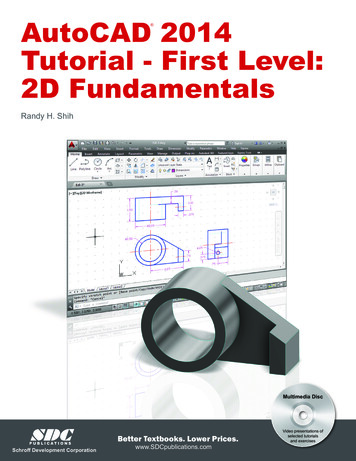

![Drawing the Human Head Burne Hogarth[English] - Internet Archive](/img/29/drawing-the-human-head-burne-hogarth-english.jpg)
